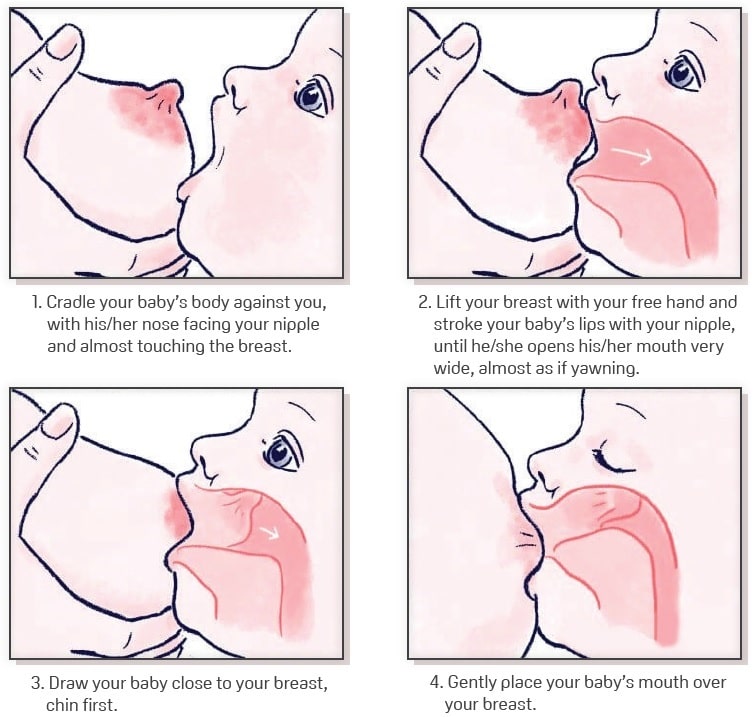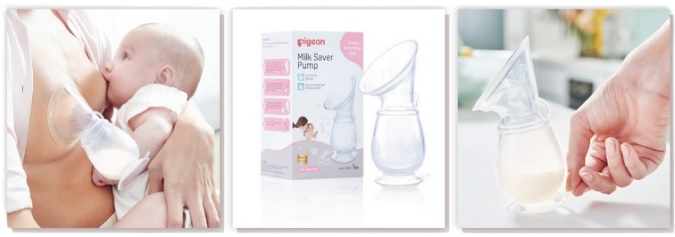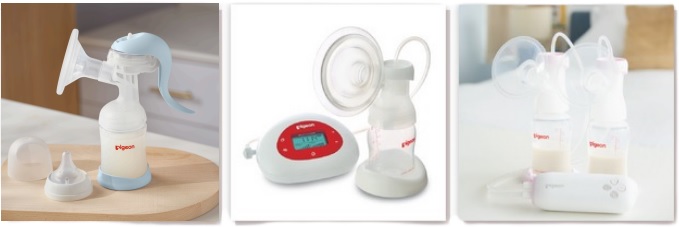Breastfeeding

Breastfeeding is the most natural way to feed your baby.
It provides all the nutrition your baby needs, satisfies their hunger and thirst, and helps to create a loving bond between you and your baby.
Just because breastfeeding is natural doesn’t mean it’s easy to do.
Breastfeeding is a different journey for each mother. The first few weeks can be challenging, but with practice and the right advice you can be successful.
We’ve put together some essential information to help you get started!
PREPARE IN ADVANCE
- Begin by preparing your mind for breastfeeding.
- Be positive and tell yourself you want to do it and you can do it!
- Get in touch with a Lactation Consultant for guidance.
- Get support from your partner, family, and friends or join a Breastfeeding Support Group.
EARLY CONTACT
- A baby’s contact with its mother’s skin should begin within the first hour after birth. This is when the rooting and sucking reflexes are strongest and will allow your breastfeeding hormones to kick in.
- Put your baby to your breast as often as possible during the first few days. For the first 3 days before your actual breastmilk comes in, your body produces thick, yellow, nutrient-rich colostrum.
- This is very important for your baby as it boosts baby’s immune system with your antibodies at the same time encourages your body to start producing breastmilk.

GETTING COMFORTABLE
It’s important to hold your baby close to your body. Use a pillow for support to achieve a comfortable and relaxed position.
There are four common positions. However there is no wrong or right position, whichever works best for you and your baby.
1. CRADLE
2. FOOTBALL HOLD
3. LAID BACK
4. SIDE-LYING

LATCHING
Getting your baby to latch correctly is one of the most important steps for successful breastfeeding.
How will you know if your baby has latched correctly? It should not hurt but rather be a pulling sensation.
You should be able to hear and see your baby swallow.
Your baby’s entire mouth should cover the whole nipple and most of the areola.
The nipple should be far back in baby’s mouth and his lips will be pursed outwards.
If it does hurt, you will need to unlatch baby by gently inserting your little finger
between his mouth and your nipple to break the suction and start again.

SUPPLY AND DEMAND
Your baby’s sucking stimulates the “let down” reflex, which you may feel as a tingling sensation in your breasts.
The first milk or fore-milk that comes out in the first few minutes of feeding is mainly a thirst-quencher. For your baby to reach the calorie-rich hind-milk, you must let him completely empty a breast.
If your baby is still hungry, offer the second breast. Start feeds with alternative breasts to be sure both are emptied well.
The more milk your baby demands, the more your body will produce. When feeding, don’t clock watch. The best feeding is a relaxed experience. Some babies feed quickly, while others take their time.
Your baby will drink until they are full and your breast may feel empty.
A full or satisfied baby will release the breast on their own and be quite sleepy, indicating that they have had enough breast milk.
Breast Pads
You need to have a Breast Pad which offers you and your clothing complete protection from leaky breasts.
Pigeon’s super soft ComfyFeel™ Breast Pads keeps you dry and comfortable – day and night.
They are Ultra-absorbent, with leak-proof breathable polymer which absorbs 20 times its weight, keeping your skin cool and dry.
Ultra-soft. It reduces the likelihood of nipple abrasion and contains extracts of Aloe Vera for added moisturization and comfort.
Comfortable & Discreet. Double adhesive tape prevents the pad from shifting inside the bra.
Hygienic and individually wrapped.

TROUBLESHOOTING – HANDY TIPS
You have done everything that is necessary to get you started with your breastfeeding, but now you may find you are faced with a few unexpected challenges to deal with.
Pigeon have a wide range of products to help support you along your breastfeeding journey, and we have included some details of these products below, along with some handy troubleshooting tips:
LOW MILK SUPPLY
- Power pump – this is pumping every 2 hours and in-between feeds
- Breastfeed frequently
- Drink lots of water
- Eat your veggies
CRACKED/TENDER NIPPLES
When you start to breastfeed your nipples may become sensitive or cracked in the first weeks of breastfeeding. Rub a little breastmilk over them to soften before a feed and after a feed, together with the Pigeon Nipple Care Cream with Lanolin, which is 100% natural, hypoallergenic and safe for baby.

If your nipples are very sore or bleeding, then your baby may be latching incorrectly, using the Pigeon Natural Feel Nipple Shield will teach your baby to latch correctly, at the same time giving your nipples time to heal.

INVERTED NIPPLES
If you have inverted nipples, the Pigeon Nipple Puller will gently draw out your nipple so that your baby can latch on and nurse from the breast.

ENGORGED BREASTS
It is possible for your breasts to get very full and feel painful. Breasts get engorged as your body learns to regulate milk production.
To alleviate this:
- Place a warm facecloth over your breasts before feeding; or
- When in the shower, gently massage your breasts at the same time expressing off a small amount.
- Using the Pigeon Milk Saver Pump will assist in relieving the engorgement, as it does not cause stimulation, but just allows some milk to be released when attached to the breast.
- Cabbage leaves have an enzyme which relieves inflammation. Place them on your breasts for pain relief.

MASTITIS
If you are presenting with the following symptoms then you may have Mastitis and need to be seen by your GP.
- A breast that is inflamed, sore swollen or red;
- If you have the chills or just feel like you have the flu.
Expressing
If you are not sure that your baby is feeding correctly, express some milk after each feed, with either a manual or electric breast pump. This will assist you to understand what it should feel like and see the quantity of milk produced in a few minutes.
Express milk off during feeds to build up a supply of your precious breastmilk to give to your baby during those times when you need a break, having to go back to work as well as outings.
Pigeon Manual & Electric Breast Pumps have all the features you need to comfortably express and store breastmilk for your baby.

STORAGE SOLUTIONS
Express and store your breastmilk in our conveniently sized Pigeon Breastmilk Storage Bottles with sealing lids as well as the Pigeon Breastmilk Storage Bags.


Related Brochures

first-1000-days-from-conception-to-birth

nappy-rash
